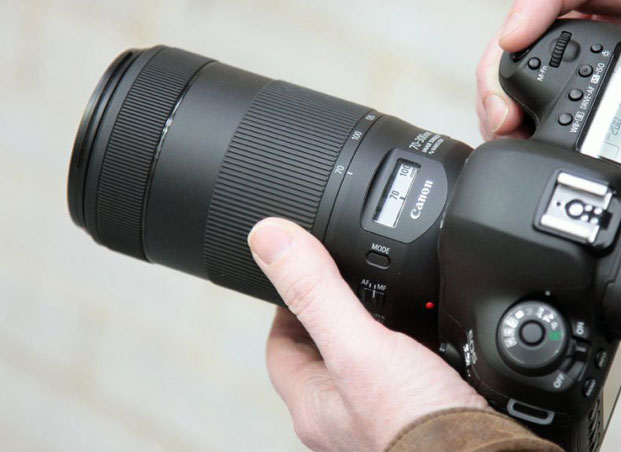Choosing the right lens is essential for capturing great wildlife photographs, but different subjects require different lenses. Here's a guide on what you'll need, whatever your budget.
The camera is only a small part of the equation in photography. Essentially there is very little difference from one model to the next. More expensive cameras may have higher resolution image sensors or more advanced features but, in the hands of a good photographer, great images can be captured on any type of SLR camera. It's the lenses you choose which will make the difference between successful shots and those rather less successful ones. It isn't however essential to spend huge amounts of money on lenses. They exist to suit all budgets.
Standard Zoom Lenses
Before splashing out on expensive long lenses, don't underestimate the importance of standard zooms. Many of these come with cameras and are great if you are able to get close to your subject. Many offer close focusing, allowing you to photograph insects and butterflies. If this is the only lens you have, try looking for tame subjects as they will allow you to get closer to them. Don't forget, filling the frame with a subject isn't essential. Try showing the habitat in which your subject exists.
Wide Angle Lenses
Wide angle lenses are used predominantly in landscape photography. They come into their own when photographing vast landscapes or open vistas. However they are a useful tool for nature photography as well, enabling the photographer to get in close to the subject giving a very dramatic image. In theory, any lens under 50mm is classed as a wide-angle however, in practice, focal lengths of 35mm or below are seen as wide angle. Ultra-wide-angles, with focal lengths as low as 10mm, are becoming more and more popular. Many optical problems have to be overcome to produce such wide-angle lenses thus prices go up as a result. If you want to invest in a good one, it will open up huge photographic opportunities


Telephoto Lenses
If you're starting in wildlife photography and don't want to spend a small fortune on kit, a good 70-300mm style telephoto zoom lens is your best bet. These can be bought for around £200. These longer lenses are essential for photographing small birds in their natural environment. Be careful of camera shake, the longer the lens, the more chance of getting camera shake which will ruin you pictures. Optically stabalised lenses help reduce this shake by using gyroscopes in the lens elements, however this technology does push the price up. Remember, if you are on tight budget, whatever lenses you are looking at, don't be afraid to go for the independent makes as these are usually just as good as the brand names but half the price!
Ultra-Telephoto Lenses
Generally speaking, ultra-telephotos are considered to be lenses longer than 300mm in focal length. As they become slightly less 'mass market' the price does increase. They are generally much larger than standard telephoto lenses to allow enough light through the lens. Essential kit for professional photographers, these lenses are often out of reach for hobbyists. They offer first class optical quality but due to the weight, a tripod or other sturdy support is a must. They allow photographers to keep a good distance from their whilst still allowing frame filling compositions.


Macro Lenses
Ever wondered how to fill the frame with a tiny subject such as butterflies or insects? A dedicated macro lens is the answer. True macro lenses offer 1:1, or life-size, magnification. This means that the subject appears the same size on an image sensor or 35mm film as it is in real life. These lenses are specialist and designed primarily for close-up photography. They vary in focal length from about 50mm to 180mm. Other than the size, weight and price, the only real difference is that, the longer focal lengths allow you to capture the same image by standing further away from the subject. This is handy for photographing moving subjects which will be disturbed if you get too close. For wildlife photography, anything over 100mm focal length is ideal.
Tele-Converters
Tele-converters are small lenses which can be used in conjunction with telephoto lenses to add extra focal length to the lens. They generally come in 1.4x and 2x formats. Therefore, if using a 1.4x converter on a 100mm lens, the focal length becomes 140mm. If using a 2x converter, it becomes 200mm. These are great if you are on a tight budget as, especially with the 1.4x converter, optical quality remains very high. The drawback is you loose light travelling into the lens, 1 stop with a 1.4x and 2 stops with a 2x converter. They are not compatible with all lenses so do check compatibility before you buy.



